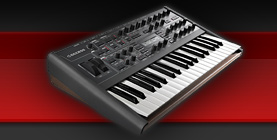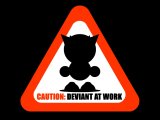

|
|||||||
| Sound designing Discussion about sound designing with the Virus series synths. Share patches and your knowledge or ask questions. |
 |
|
|
Thread Tools | Search this Thread | Display Modes |
|
#1
|
|||
|
|||
|
I am trying to find out where Prince got his drum sounds from (Purple Rain era)......also I was wondering about the drum sounds on Information society's "I want to know what your thinking"?????Any ideas????
|
|
#2
|
||||
|
||||
|
This is it. Prince is famous for having built a shrine in his house dedicated to this drum machine lol.
 "This is THE classic drum machine of the 80's - it launched the drum machine revolution! The Linn LM-1 Drum Computer was created by guitarist Roger Linn and he used samples of acoustic drum sounds. At the time, they sounded great and much more realistic and they were a fresh alternative to the analog drum sounds of the '80's drum machines. About 500 LM-1's were made before the LinnDrum model appeared in 1982. There are twelve 28kHz samples including: snare, kick, three toms, hi-hat's, tambourine, congas, claps, cowbell, and rimshot, but no ride or crash. There are also 100 memory patches! Patterns can be created in real or step time. An innovations of the time was the swing and quantize functions that appeared on the LM-1. The LM-1 is an historical synth that has a place in the sound of music from the heart of the '80's. Only 500 of these things are out there so don't count on finding one easily. It has been used by Phil Collins, Thompson Twins, Stevie Wonder, Gary Numan, Depeche Mode, The Human League, Jean-Michel Jarre, John Carpenter, Todd Rundgren, Prince, and The Art of Noise. Roger Linn changed the way we all work today.... fact! There had been drum machines before and there had even been programable drum machines in the form of the Roland CR78 and the TR808. However, where these drum machines used synthesised and 'artificial' sounds, Roger Linn pioneered by being the first to provide sampled acoustic sounds of a 'real' drum kit that could be programmed and sequenced into quite authentic sounding rhythm tracks. His first offering, the LM1 was outrageously expensive but captured the imagination of many cutting edge musos of the time. People like Peter Gabriel, Human League, Ultravox and many others. But it was the 'Linn Drum', the LM2 that was to be more commercially successful. It featured 15 sounds... yes... a staggering 15!!! ... that included kick, snare, sidestick, hi-hats, toms and so on and the LM2 also offered crash and ride cymbals as a result of increased memory capacity at lower cost. Of course, nothing amazing by today's standards but at the time, the Linn Drum was nothing short of revolutionary and almost single-handedly, Roger Linn changed the way we construct and create music. Despite its high price, the Linn Drum became the rhythmic backdrop for the '80s. The Linn Drum led to the development of the ill-fated Linn 9000 but this development was taken over by Akai Professional and evolved into the highly successful MPC series of sampling drum machines."
__________________
Cubase 4.5.2 Motu 896, Access Virus B, Novation Bass station, Novation Drumstation v2, Remote Zero, Roland SH32, Dynaudio BM5a monitors, Dynaudio BM9s sub, http://www.soundclick.com/bands/page...?bandID=455128 |
|
#3
|
|||
|
|||
|
Thank's man......killer reply!!!!!!!!!!!!!!!!!!!!!
|
|
#4
|
||||
|
||||
|
i belive Roger Linn has some new drum-amp modeling thingy machine going on in coaperation with m-audio.
http://www.rogerlinndesign.com/ |
|
#5
|
|||
|
|||
|
Quote:
__________________
HCs solo work at http://www.myspace.com/hollowcellbeats Sound designs at http://www.soundclick.com/bands/8/hollowcell.htm HCs and JCs colab project at http://www.myspace.com/rhythmusimblut |
|
#6
|
||||
|
||||
|
Quote:
__________________
Cubase 4.5.2 Motu 896, Access Virus B, Novation Bass station, Novation Drumstation v2, Remote Zero, Roland SH32, Dynaudio BM5a monitors, Dynaudio BM9s sub, http://www.soundclick.com/bands/page...?bandID=455128 |
 |
«
Previous Thread
|
Next Thread
»
| Thread Tools | Search this Thread |
| Display Modes | |
|
|
 Similar Threads
Similar Threads
|
||||
| Thread | Thread Starter | Forum | Replies | Last Post |
| Does the Ti have Drum sounds | dries | General discussion about Access Virus | 12 | 16.01.2007 08:47 AM |
| Programming Drum Sounds | BlakeLight | Sound designing | 1 | 09.11.2005 10:01 PM |
| Drum sounds | unio mystica | Sound designing | 1 | 05.02.2004 10:41 AM |
All times are GMT. The time now is 11:15 PM.
Powered by vBulletin® Version 3.6.4
Copyright ©2000 - 2025, Jelsoft Enterprises Ltd.
Skin Designed by: Talk vBulletin
Copyright ©2000 - 2025, Jelsoft Enterprises Ltd.
Skin Designed by: Talk vBulletin
Copyright ©2002-2022, Infekted.org
 |
 |









 Linear Mode
Linear Mode

